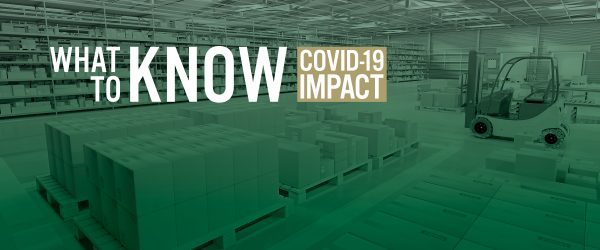Perspective: The Consumer’s Critical Role in Stabilizing the Nation’s Supply Chain

We all count on the stability of the supply chain, and we can all contribute to it. ‘Big Data’ keeps the shelves stocked when we shop smart.
 It’s a fairly common sight these days—rows and rows of empty shelves at nearly every store. Even the big-box stores can’t escape this new reality. For weeks, panicked shoppers have been frantically buying any non-perishable items they can get their hands on. Toilet paper, hand sanitizer and disinfectants have vanished from the shelves, with no replacement stock available.
It’s a fairly common sight these days—rows and rows of empty shelves at nearly every store. Even the big-box stores can’t escape this new reality. For weeks, panicked shoppers have been frantically buying any non-perishable items they can get their hands on. Toilet paper, hand sanitizer and disinfectants have vanished from the shelves, with no replacement stock available.
A reality that stands in sharp contrast to the world of same-day Amazon deliveries we are used to.
The resilience of the nation’s supply chain—the flow of goods and services—depends on many factors, many of which are currently facing unprecedented challenges.
Global manufacturers are battling workforce shortages due to virus spread, international cargo ships are being forced to extend routes between countries to two weeks to allow crew members adequate time to isolate, truck drivers are experiencing increased regulations for the number of hours they can stay on the road, all of which are playing a role in stores being unable to replenish their shelves in a timely manner.
Unfortunately, many of these factors extend beyond our control as consumers. However, we—the end customers—can still contribute to the stability and resilience of the supply chain during this crisis by simply adjusting our shopping style and buying habits.
The key lies in the power of big data.
Every time you scan your loyalty customer card at the checkout, the store collects information about your purchasing history. While data for a single purchase is fairly inconsequential, the accumulation of every customer’s purchase history over time allows stores to accurately predict the types and volume of goods customers need. This is why you might notice your local grocery store runs a “buy one, get one” sale for items like paper towels and toilet paper roughly every six weeks.
As a result, the panic buying often seen in times of uncertainty—like the spread of COVID-19—renders nearly all customer purchase history data useless since the prediction model is skewed by an onslaught of wildly unique data entries. A sharp increase in the demand of non-perishable items like canned meats and vegetables or toilet paper for a sustained period of time will cause a large bias in prediction results. Often leading to inaccurate or even incorrect shipments of goods on the highways.
Furthermore, this undermines the stability of the supply chain on a global level. The ability to accurately predict consumer behavior provides a level of confidence in the production and manufacturing capability of the United States.
Each year, the U.S. exports 70 percent of its production of tree nuts and cotton, 50 percent of rice and wheat production, 13 percent of beef and 26 percent of pork—and the list goes on.
It’s easy to lose sight of just how connected we all are.
As such, it’s important to remember that in times of uncertainty to practice moderation in our purchasing style and buying habits. It’s OK to “stock up,” but be reasonable. This will allow the prediction models to accurately forecast consumer demands as well as shipping schedules, helping to ensure we all continue to see fully stocked shelves at our grocery stores.
Weichao Wang is an associate professor of Software and Information Systems in the College of Computing and Informatics at UNC Charlotte. His research focuses on the safety and robustness of distributed systems and cyber-physical systems. His research has been funded by the National Science Foundation and the U.S. Department of Labor.